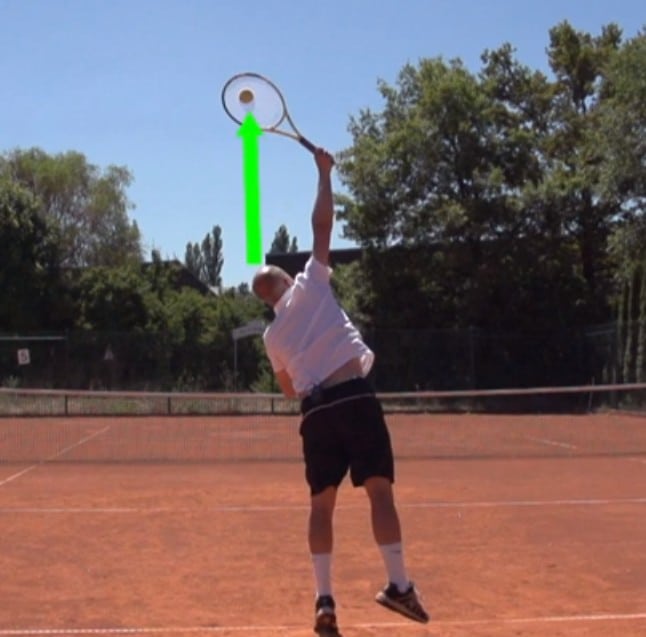Choosing the right tennis strings can be confusing. There are hundreds of different kinds of strings on the market.
In this article I want to simplify things and help you find the right string for your game!
So let’s have a look at the different types of strings on the market. First of though I want to emphasize that I believe most tennis players spend too much time trying to optimize their rackets and strings rather than working on their game.
Some tennis strings are better suited for beginners, others for intermediates and/or advanced players. What type of string you should use can also depend a little bit on your game style and of course on your budget.
Once you have figured out what type of string suits your level and game style well, I believe it does not matter very much which one in that category you pick.
Experimenting with your tennis strings can be fun though and there is of course nothing wrong with it. Just don’t fool yourself into believing that you are gonna have a better forehand or backhand if you use different strings!
Generally there are two categories with tennis strings: Natural Gut and Synthetic Strings
Natural Gut
These strings are made from cow or sheep intestines. They are usually the most expensive strings on the market and up until about 10-15 years ago almost all Professional Tennis Players used natural gut strings.
With natural gut strings players usually have good feel and control for the ball. They were extremely popular with serve-and-volley players like Stefan Edberg and John McEnroe.
Unfortunately they are not very durable and they can be quickly affected by bad weather conditions. Last but not least they are a bit more difficult to string.
To sum it up here are the pros and cons of using natural gut strings:
Natural Gut Pros:
- Good control
- Very soft (easy on the arm)
- Tension retention
Natural Gut Cons:
- Expensive
- Not very durable
- Weather sensitive
- Difficult to string
A very common natural gut string is the Babolat VS Natural
Synthetic Strings
Synthetic tennis strings are basically all strings that are not made out of natural gut. These man-made strings are usually more durable than natural gut strings yet do not provide as much feel and control.
There are a lot of different types of synthetic strings on the market that also play quite different. The construction can vary from one solid piece of string called monofilament to multifilament which is somewhat like natural gut in the sense that it consists of many very fine strands.
I am not going to go into detail in regards to how these different types of strings are constructed. Instead I will try to give my recommendation as to which strings are suitable for what players.
Here are the most important categories to consider:
Nylon / Synthetic Gut
These are some of the most common strings for amateur players. Most of them are very inexpensive and this is usually the type of string that most rackets sold in tennis shops come with!
Nylon strings usually are more durable than natural gut strings but not nearly as durable as polyester strings
Nylon / Synthetic Gut Pros:
- Inexpensive
- Playability
Nylon / Synthetic Gut Cons:
- Medium durability
Examples of these strings are: Prince Tournament Nylon, Wilson Synthetic Gut
Nylon / Synthetic Gut strings are my recommendation for most recreational players!
Want To Improve Your Game ?
Sign Up And Get Free Video Tips!
Polyester
These strings are a lot stiffer and more durable than nylon type strings. They are very popular among advanced players because they do not break very often! Additionally the stiff string does not move around in the racket as much and players can hit more topspin with these types of strings.
Most professional tennis players these days use some kind of polyester string! The reason essentially is that you can hit the ball harder and still keep the ball in the court.
Many pro players like Andre Agassi have mentioned before that the new kind of polyester strings like Luxilon Big Banger have changed the way the modern game of Pro Tennis is played!
Polyester Pros:
- Durability
- Good for power-hitters
- Great control at high swing speeds!
- Lots of topspin
Polyester Cons:
- Not a lot of feel
- Tough on the arm
- Quick loss of tension
Common polyester strings are: Luxilon Big Banger, RPM Blast
I recommend polyester strings only to advanced players that want to hit with plenty of topspin and are not prone to arm/elbow injuries!
Hybrid Strings
Here a combination is used of a polyester string in the main (length of the racket) and a softer string, either natural gut or synthetic gut, in the crosses (width of the racket). Numerous combinations are used here and hybrid strings are quite popular among professional players as well.
The idea is to have a reasonable amount of durability with the polyester strings in the main and also good ball control with a softer string in the crosses. (Roger Federer does it the other way around with natural gut in the mains and polyester in the crosses, but I do not recommend copying this!)
Hybrid Pros:
- Good durability
- Good feel/control
Hybrid Cons:
- More expensive than nylon/synthetic gut
- Loss of tension
A very common hybrid combination among pro tennis players is Luxilon Big Banger in the mains and a natural gut or Wilson NXT string in the crosses! Many brands also sell hybrid strings in packages now like the popular Babolat Hurricane Tour + VS combo.
So much for the different types of strings. Now we need to take a look at string tensions, string thickness, weather influences, and restrings!
String Tensions
The best tension is really a matter of feel and the string tensions of tour players also vary a lot.
Generally if you string your racket harder it will give you less power but more control. If you string your racket softer it will give you more power but less control!
Also if you string softer it will usually give you more feel. So-called touch players often use very soft strings whereas power players tend to string their rackets harder.
My best advice here is to experiment and go with what feels best to you!
String Thickness
Tennis strings also vary in thickness. The thickness can range from 1.10mm to 1.43mm. Often the expression of gauge is used. These measurements vary from 15 gauge (1.43mm) to 18 gauge (1.10mm).
The thickness of a string has a big effect on playability and durability!
Generally the thinner the string the better it plays and the faster it breaks!
Thinner strings are also less stressful for your arm. Therefore my advice is to go as thin as possible without breaking too many strings!
Weather Influence
You should not expose your tennis strings to extreme weather conditions because it can influence the string tension. Natural Gut strings are most vulnerable to weather and polyester strings are probably the least vulnerable.
Restrings
All strings will loose tension over time and therefore you should replace your tennis strings at least a couple of times a year!
Conclusion
For beginners and most recreational players a nylon/synthetic gut string is usually the best choice. It is affordable and has good playability.
For advanced players that hit with tons of topspin and break a lot of strings, a polyester string is usually the best choice. It is a fact that polyester strings will generate more spin and therefore make it easier to keep the ball in the court when swinging at really fast swing speeds!
Hybrid strings can be good for all types of players. If you don’t mind spending a bit more money and want to experiment with a more advanced string I recommend you go for one of the common hybrid combinations on the market!
Natural Gut strings are fun to play with and if you don’t mind spending the money go ahead and try them to see if they work well for your game!
If you want more information on Tennis Strings I recommend you visit Stringforum.net
So that was it for Tennis Strings!





